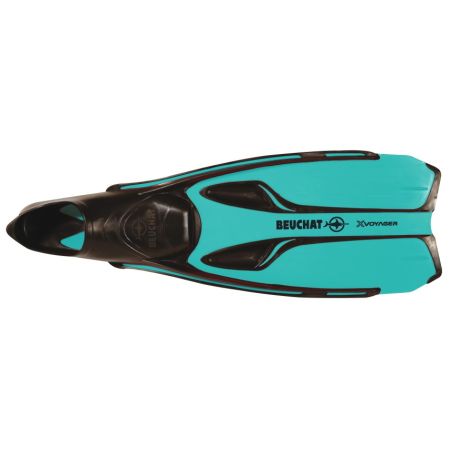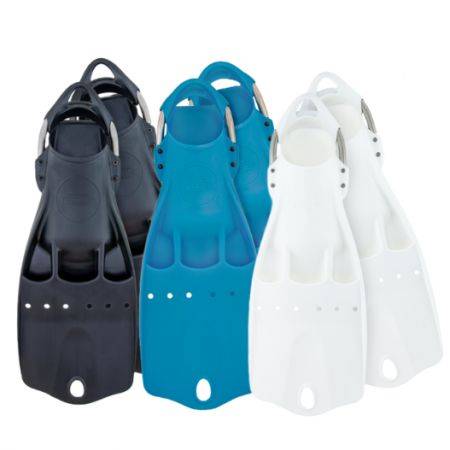
02/16/2024
How to choose your fins ?
How do I choose the right fins?
The choice of fin type depends on a number of factors, including your level of diving experience, your personal preferences, the type of diving you do and the diving conditions you'll be facing.
Swimming fins and diving fins: what's the difference?
It's important to distinguish between swimming fins and diving fins. Swimming fins are shorter to make them easier to use in the pool, but also to maintain a beat frequency close to that of swimming without fins. Diving fins, on the other hand, come in all sizes, with blades of varying degrees of hardness. The longer they are, the greater the propulsion force. There are also snorkelling fins and freediving fins.
For which level?
Rigid fins are generally recommended for advanced swimmers, as the effort required of the legs is more intense. Also, if you are undergoing rehabilitation or have muscular or joint injuries, choose fins with a flexible or semi-rigid blade.
Here are a few types of fin commonly used in diving:
- Adjustable fins: These fins have an adjustable strap that allows you to adjust them to your foot size. They are versatile and suitable for most divers. You can wear them with neoprene booties or ankle boots for added comfort and warmth, especially in colder waters. To choose the size of your fin spring, put your foot in the adjustable fin and measure the distance between the two clips on either side of your fin. If you're not sure between two sizes of adjustable fin spring, we advise you to choose the smaller of the two. This is because the spring must be able to hold your foot firmly in the adjustable fin. If you want a powerful adjustable fin, we recommend the Hollis F2 fin , or if you want a more flexible adjustable fin, we recommend the Lightjet fin from Tecline. This fin is ideal for travellers too, because as its name suggests, it's a lightweight pair of fins, perfect for planes, for example.
- Slipper fins: Slip-on fins are designed with an integrated liner, meaning you don't need to wear separate liners. They are easy to put on and offer a barefoot feel, ideal for diving in warm, tropical waters. However, they don't allow you to customise the fit for different foot sizes. Here's a shoe fin that adapts to a wide range of foot shapes: 1dive shoe fin
- Long fins (freediving): Long fins are designed mainly for freediving or snorkelling. They are longer than traditional fins and provide extra propulsion to cover longer distances on the surface. They can also be used for scuba diving, but require a different finning technique.
- Travel (short) fins: Travel fins are generally shorter and lighter, making them ideal for swimmers who want to reduce the weight and bulk of their equipment when travelling. They are suitable for calm waters and snorkelling. Here's a fin that's perfect for snorkelling: Beuchat x Voyageur fin
Adjustable or slip-on fins?
The first choice you'll have to make is between shoe and adjustable fins. Slip-on fins offer a close-to-the-foot fit for better power transmission. They are ideal for dives in calm waters. On the other hand, adjustable fins offer greater versatility, allowing you to adjust the size to suit different diving conditions. They also allow you to put on a thick bootie or even ankle boots, which is ideal for cold-water dives.
It's essential to choose your fin type according to your diving style and the specific conditions of your diving destination. Don't hesitate to ask us for help in finding the fins that suit you best. We look forward to hearing from you!
Visit our website diveavenue.com to find your equipment !




